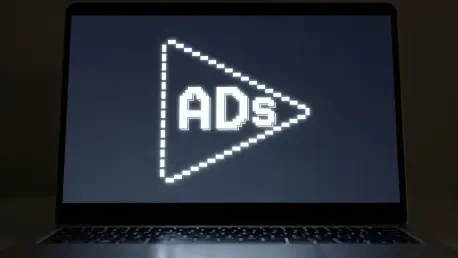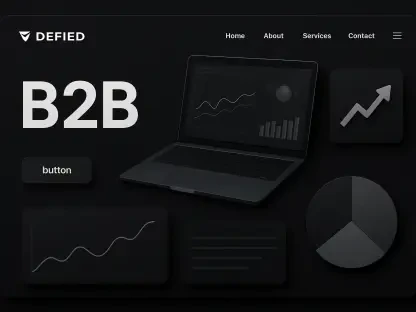Why Auto-Linking Alters The YouTube Advertising Equation
When customer attention fragments and first-party signals decide winners, even small shifts in data plumbing can reprice an entire channel’s economics by collapsing setup friction and amplifying optimization feedback loops. Google’s new policy to auto-link YouTube channels with Google Ads accounts sits in that category: a procedural update with strategic weight. The move aims to transform organic engagement into dependable signals while keeping administrators in control of whether connections proceed.
At its core, the change reframes YouTube from a mostly siloed organic surface into a signal-rich feeder for remarketing, measurement, and bidding. The promise is faster activation and better modeling; the trade-off is tighter reliance on platform automation and the governance that follows it. This analysis examines the mechanics, the performance upside, the boundaries that remain intact, and the controls brands need to sustain compliance without sacrificing speed.
The market impact reaches beyond video teams. As platform-led integrations roll across ad stacks, the brands that operationalize approvals, consent, and permissions quickly will capture compounding gains in audience quality and model stability, especially as AI-driven bidding leans on denser engagement inputs.
Market Dynamics And Competitive Context
Auto-linking replaces a chronic bottleneck. Historically, manual channel-to-Ads linking was easy to miss, leaving remarketing lists thin and optimization undernourished. Now, when Google detects a high-confidence relationship, both the Ads admin and the channel owner receive notice with a 30-day opt-out window, and a single admin can approve immediately if they control both assets. If no one declines, the link finalizes automatically, with reversible permissions thereafter.
This cadence doesn’t just save clicks; it accelerates value capture. Linked entities can build segments from views, likes, and subscriptions; treat engagement as conversion-like where appropriate; and feed organic interactions into bidding and measurement. The effect is a shorter path from earned attention to paid efficiency, which matters most for mid-market advertisers and agencies with thin operations.
However, the system enforces firm boundaries. Channel owners do not gain access to the advertiser’s account; advertisers cannot modify channel content; and if the channel disables personalized ads, audience reporting shuts off. YouTube’s VAC constraints still apply globally, with relief only for the specifically linked Ads account. These safeguards limit overreach while still enriching signals.
Mechanics, Value, And Governance In Practice
Adoption Levers And Operational Realities
Email-based notices and default opt-in create momentum, but ownership determines results. Teams that assign named approvers, define escalation paths, and centralize auditing move faster without losing control. The real-world risk is ambiguity: Google’s “high-confidence” detection logic isn’t exposed, so administrators must decide whether to trust the match, request internal validation, or reject by policy.
Even with reversibility, the first 30 days matter. Brands that standardize acceptance criteria by region, brand line, or content type avoid ad-hoc decisions. When a single user controls both assets, immediate linking brings instant access to engagement signals, compressing weeks of setup into hours.
Value Creation And Limits Of Signal Activation
Linked data unlocks higher-quality remarketing pools, more stable modeled conversions, and budget allocation that reflects true engagement. Subscriptions can be scored as conversion actions where they correlate with revenue or retention, but not all channels benefit equally. Testing frameworks—cohort comparisons, holdouts, and incremental lift studies—separate causation from correlation and prevent inflated ROAS.
Crucially, auto-linking is additive, not permissive. It enriches inputs without expanding creative control or account authority. Brands maintain content governance, and VAC boundaries persist. That distinction matters for legal teams evaluating data-sharing footprints versus asset control exposure.
Regional Nuance, Consent, And Compliance Hygiene
Consent expectations vary across jurisdictions, and auto-linking’s opt-out posture can collide with stricter interpretations of lawful basis. Some organizations will disable personalized ads on certain channels to suppress audience reporting; others will link but constrain how engagement informs bidding. A least-privilege approach—tight scopes, quarterly reviews, and documented unlink procedures—minimizes risk while preserving upside.
Misconceptions surface quickly: auto-linking does not open channel management to advertisers, nor does it universally expand campaign eligibility outside VAC. It primarily consolidates first-party engagement into Ads surfaces where AI models can learn faster, provided the legal ground is solid and the permissions are right-sized.
Forecast, Competitive Pressure, And Scenarios
Platform trends point toward deeper consolidation of first-party signals, simpler defaults, and heavier reliance on AI optimization that ingests YouTube engagement beyond video formats. Expect organic metrics to inform cross-network strategies, with attribution and MMM calibration absorbing more on-platform inputs to stabilize planning.
Economically, the policy favors speed. Reduced setup friction should lift adoption for resource-constrained teams, bringing earlier remarketing viability and steadier learning phases. Regulators may press for transparent criteria behind “high-confidence” matching and clearer consent surfaces, prompting enterprise-grade admin tooling—centralized approval queues, audit logs, and policy enforcement at scale.
Base case: auto-linking becomes standard, with opt-out used primarily for sensitive regions or brands. Upside case: engagement-as-conversion drives measurable lift for subscription-heavy or creator-led businesses. Downside case: inconsistent governance triggers opt-outs that slow signal accrual, muting AI gains and widening performance gaps versus better-orchestrated competitors.
Strategic Takeaways And Recommended Actions
The findings pointed to a durable performance upside, provided governance kept pace with automation. The most successful advertisers designated owners for the 30-day window, codified acceptance rules by market and brand, and validated engagement signals with incrementality tests before treating them as conversions. Legal and privacy teams aligned consent frameworks with channel settings, particularly where personalized ads were disabled, and maintained least-privilege access with quarterly reviews.
Tactically, teams tracked audience list growth, remarketing efficiency, view-through conversions, and model stability after linking, then adjusted bids and budgets to reflect improved signal density. When auto-linking conflicted with policy, manual linkage remained a viable path once safeguards were in place. By treating auto-linking as an accelerator rather than an autopilot, brands preserved control while capturing speed, clarity, and measurable lift across YouTube-informed campaigns.









